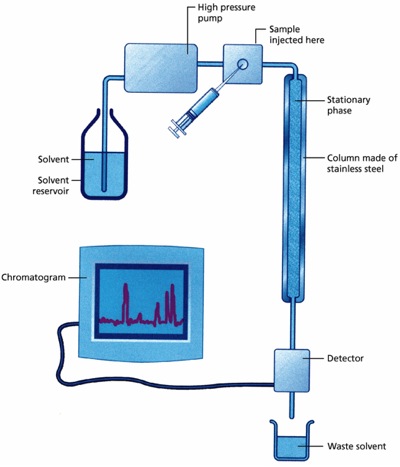Kitchen Chemistry
Buy Uncle Steve's: Dried Chiles Chile Powders Pepper Seeds

How hot are chile peppers?
Chile (often spelled Chilli) peppers are used to spice up many food recipes, including curries and various types of Mexican food. If you have ever tasted one, you will know that these peppers cause a hot, burning sensation in the mouth which is not removed even by drinking lots of water. Chemists have identified a group of compounds that cause this sensation - they are called capsaicinoids. Structural formulae of some are given HERE.
Food scientists have developed two methods of measuring how hot chilli peppers are. One is called the Scoville test and involves human tasters, the other uses a technique called High Performance Liquid Chromatography (HPLC) to measure the amount of capsaicinoids in different chillis.
The Scoville test
In this test (which is named after its inventor), the chilli is ground up with a solution of
sugar in water and a sample of the resulting liquid tasted. It will inevitably produce a burning
sensation. The solution is then gradually diluted with water until the taster can no longer
notice a burning sensation. The more dilute the solution when this occurs, the hotter the
original chilli. The amount of dilution measures the heat of the chilli in Scoville units.
Different types of chilli vary widely in their heat - sweet peppers are around 1000 units while
Habanero peppers are about 100 000 and pure capsaicin is 350 000.
HPLC
This technique is essentially about separating mixtures. It works on the same principle as paper
chromatography in that it involves a solvent moving through a solid and carrying with it the
components of a mixture, which travel at different rates. In HPLC, the solid phase is a powder
enclosed in a metal tube called a column and the solvent is forced through the column by a high
pressure pump, so HPLC is sometimes said to refer to High Pressure Liquid Chromatography. A
sample of the mixture to be separated is injected into the solvent just before it enters the
column, as pictured below.

The better a component forms intermolecular bonds with the liquid, the faster it moves through the column and the sooner it emerges from the other end. The time a component spends on the column is called the retention time. A particular substance will always have the same retention time provided that the solid phase and the solvent are kept the same so the retention time can be used to identify components of a mixture. (It is possible that two unrelated substances may have the same retention time so we need to have some idea of the likely components of the mixture to use the retention time to identify them.) A detector times when the different components emerge from the column and measures how much there is of each. A computer is then used to plot a graph (called a chromatogram) like the ones shown in question 4. The height of each peak (strictly the area below it) represents the amount of that component present in the mixture while the position on the horizontal axis shows the retention time, which can be used to identify the substance causing the peak.
When using HPLC to measure the hotness of a chilli, the analyst uses the chromatogram to measure the amounts of different capsaicinoids present. The greater the amount of these, the hotter the chilli. She or he must also allow for the different hotnesses of the different capsaicinoid compounds - homocapsaicin is only about half as hot as capsaicin, for example. The method must be calibrated by a human taster to convert the measured amounts of capsaicinoid compounds into Scoville units as no machine can actually measure the sensation of taste.
To carry out the test, a chilli is dried, weighed, ground and a solvent is added in which the capsaicinoid compounds will dissolve. A known volume of this solution is injected onto the HPLC column.
Excert from: Royal Society of Chemistry - Kitchen Chemistry SS16 How hot are chilli peppers
Still need more HOT Chile Pepper information?
Check out the "Pepper History" page.
Check out the "Chile Heat
Scale" page.
What is the
World's
Hottest Chile Pepper?
Hot Chile Pepper Medical Uses
Uncle Steve's: Dried Chiles Chile Powders Hot Pepper Seeds